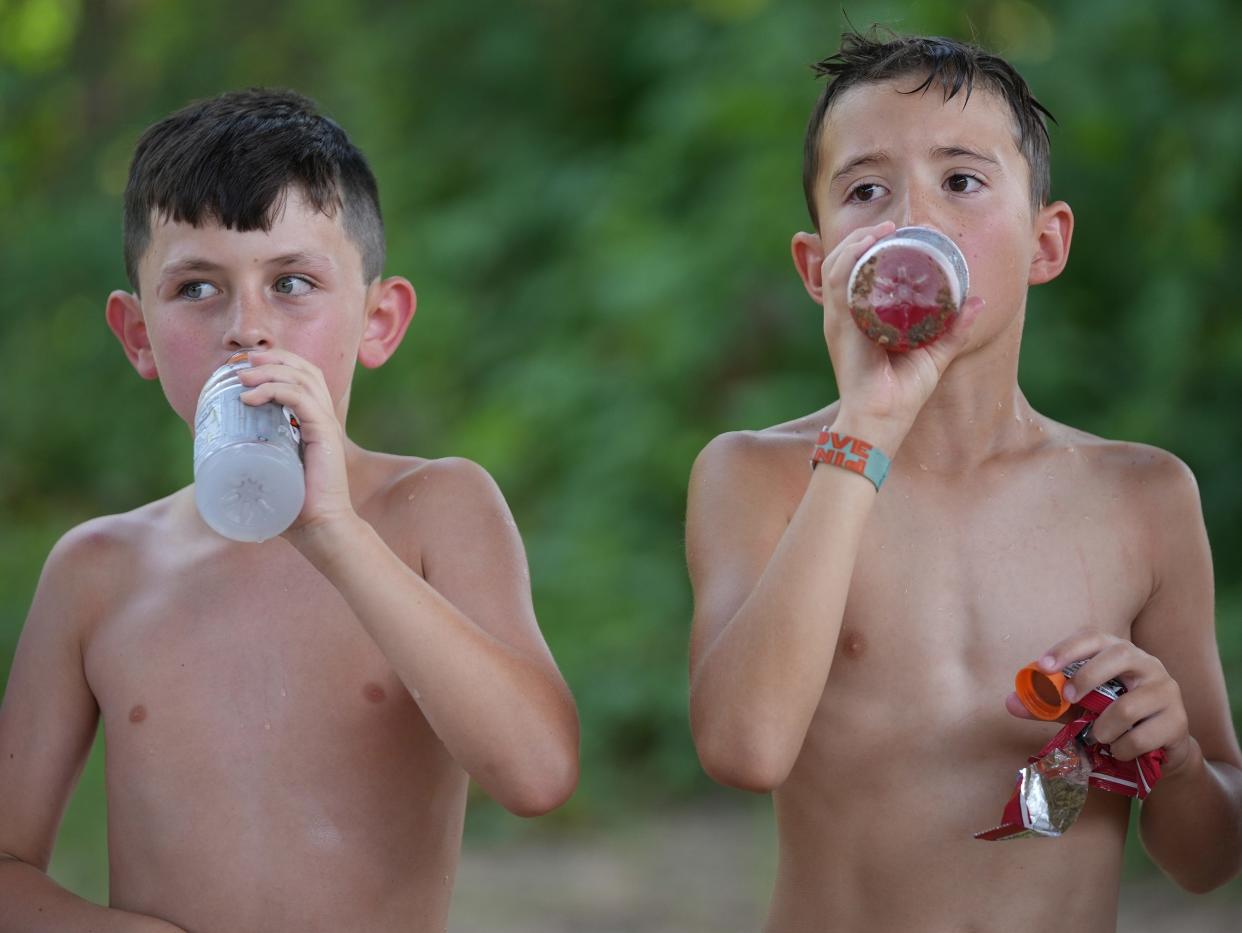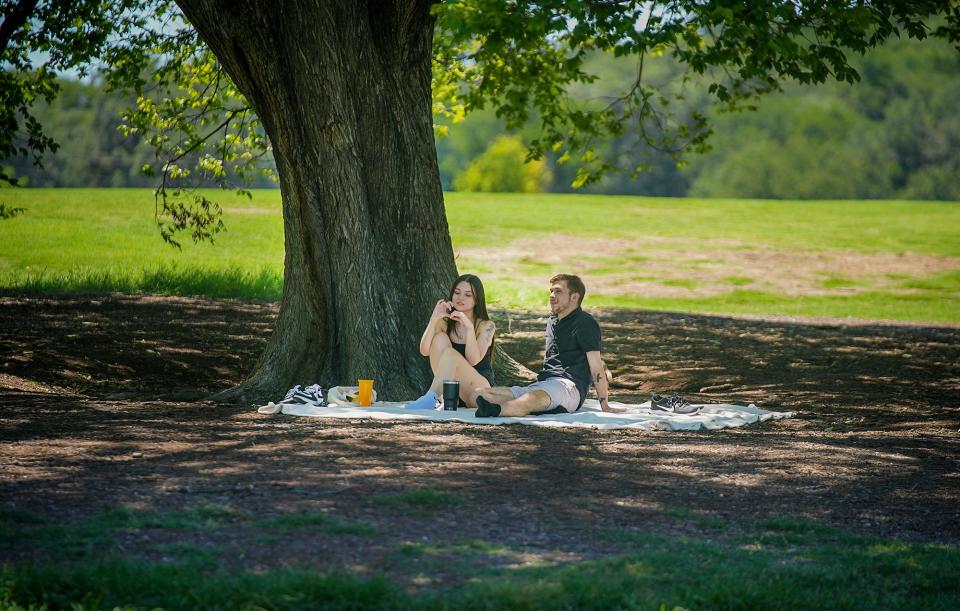Austin has seen record-breaking heat. Stay safe and out of the emergency room with tips

It has been hot, like really hot — record-breaking heat index hot. The good news: The National Weather Service expects Austin to see high temperatures below 100 degrees this week. A chance of rain could return Tuesday.
What's being seen in the emergency rooms?
Surprisingly, Austin-Travis County Emergency Medical Services has seen about the same number of heat-related incidents this June as of June 27 (154) compared to June 2022 (159).
Since May 1, almost half of the people treated in the emergency room or by EMS for heat-related illnesses were people ages 20 to 39, and 69% were male, according to Austin Public Health.
No deaths from heat-related illnesses have happened yet this year, Austin Public Health said. Since 2019, two-thirds of heat-related deaths happened on days with a heat index of 100 degrees or above, Austin Public Health said.
More: Can medications make this Texas heat worse for my body?
At Ascension Seton hospitals, many of the heat-related illnesses are happening in people who don't have a place to go to cool off, such as people experiencing homelessness or landscapers or construction workers, said Dr. Nicholas Steinour, the hospitals' emergency department director.
The emergency room departments are also seeing older people with heat-related illnesses who don't have working air conditioners or forgot to turn them on, Steinour said.
How can I stay hydrated?
Hydrate the day before a big event. If you're going to be outside, start pushing the water now. "If you wait until you are out there or later on that night, it's too late," said Dr. Ross Tobleman, the medical director for emergency care at Baylor Scott & White — Round Rock and Pflugerville. You will be trying to catch up with your hydration, he said.
Don't wait to get thirsty. You are already dehydrated if you feel thirsty.
Take frequent water breaks. Drink 8 ounces of water for every 20 minutes of activity, or about half of that amount for elementary school-age kids, said Dr. Shyam Sivasankar, pediatric emergency medicine physician at St. David's Children's Hospital. You should be going to the bathroom often, and your urine should be clear to light yellow.
More: 4 ways to be safe around water this July 4 holiday weekend
Water or electrolyte drinks count as hydration; anything with caffeine and alcohol does not. If you are going to drink sodas, tea or alcohol, drink at least a glass of water after every soda, tea or alcoholic beverage. If you are using electrolyte drinks, be mindful of the amount of sugar in those drinks, said Dr. Gaurang Shah, an emergency department physician at St. David's Medical Center.
Be kind to your kidneys. This is the time of year when Tobleman sees more people with kidney stones because they have chronic mild dehydration.

What else should I do to avoid heat illnesses?
Don't leave children or pets in a parked car — even with the motor running. Check the back of the vehicle every time you stop. Put your purse or bag in the back seat to ensure you check.
Avoid being outside between 2 p.m. and 6 p.m., when temperatures are highest, if you can. If you must be outside, schedule shade or indoor breaks.
Be careful what you wear. Wear breathable, lightweight and light-colored clothing that reflects sunlight.
Be heat wise: Austin officials again urge residents to stay cool, safe as dangerous heat persists
Know the signs of heat illness
Heat cramps: Sweating; muscle aches; prickly heat rash, especially in areas where clothing meets the skin; and dizziness. Move the person to a cooler area, hydrate, remove excess clothing and put cold compresses (a wet towel or shirt or an icepack) on hands, feet, armpits, neck and forehead. Call a doctor to get an assessment.
Heat exhaustion: Flushed skin, sweating even more heavily, cold or clammy skin, nausea, not wanting to eat and a shallow heartbeat. Move the person to a cooler area, hydrate with water or an electrolyte drink, remove excess clothing and use cold compresses or spray them with water. Call the doctor to see if you need to go to the emergency room or a doctor's office.
Heat stroke: No sweating, fast heartbeat, fainting or feeling faint, breathing quickly, confusion or delirium, loss of consciousness and a high temperature. This is a medical emergency. If you can quickly drive the person to the emergency room, great. If not, call an ambulance. While driving or waiting for the ambulance, do all the same interventions: hydration, cooler area, less clothing and cold compresses.
This article originally appeared on Austin American-Statesman: Prevent heat stroke, exhaustion with tips to survive Texas summer

